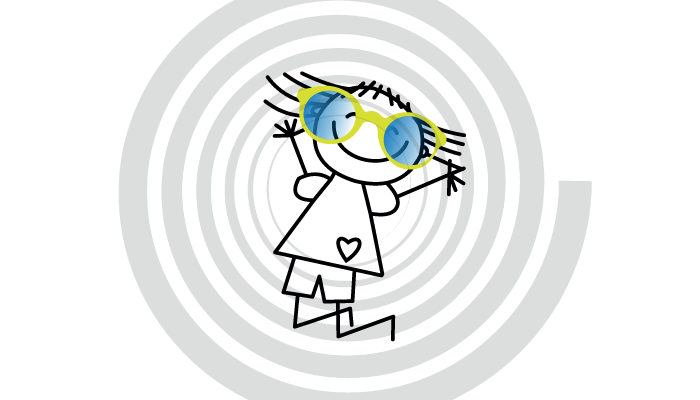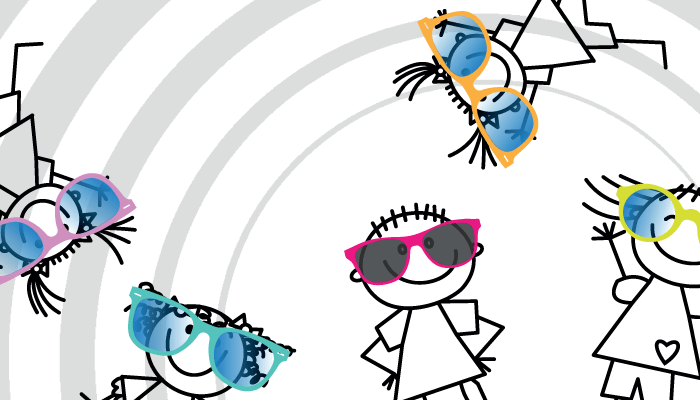
In recent conversations on the impact of COVID-19 on our patients’ lives, one interesting aspect keeps arising. In the middle of the pandemic, there’s an undercurrent of an epidemic of progressive myopia, made worse by the necessary implementation of lockdown measures to curb the spread of COVID-19. There are two well-established reasons why progressive myopia has turned into a worldwide epidemic over the last two or three decades: one, children spend much less time outdoors than they used to, and two, they spend a lot of time looking at the near point on devices such as smartphones and tablets (1, 2).
During the pandemic, especially in the weeks and months of strict lockdown measures, remote learning has been the reality for many children and young adults – a situation that may continue for a long time. As a result, young people spend even longer hours indoors, in front of computer and tablet screens, sacrificing both outdoor time and time spent looking at far points such as a blackboard or whiteboard in a classroom.
Meanwhile, studies show that a single hour of outdoor activity significantly reduces the risk of progressive myopia by as much as 45 percent (1, 3, 4). Children who use electronic devices for longer than six hours a day and have less than three hours of outdoor activity per week have twice the risk of developing myopia (2). All this means that when we return to normal – or the “new normal” – we may see a dramatic acceleration of myopia.
Innovative technologies are partly responsible for the growing incidence of progressive myopia, but can they also help prevent the progression? The impetus behind dealing with progressive myopia has been steadily growing. Significant myopia can result in complications such as retinal detachment, which can lead to sight loss, so it is crucial to address it early and in the right way.
In 2017, the American Academy of Ophthalmology confirmed that level one evidence supports the use of atropine in small doses for preventing myopic progression (5). Evidence shows that what is needed to halt progression of the disease is precise delivery of small doses of atropine to the ocular surface, getting into the eye before the patient can blink. Both children and adults have problems with accurate delivery of eye drops and, in the case of atropine, it is important to minimize unnecessary exposure to larger quantities of the drug than needed.
Eyenovia’s microdosing technology – micro-array print – not only delivers a precise dose of atropine, but also features compliance monitoring built into the electronic device, which communicates with a smartphone. This means that the patient, their family, and the physician can accurately monitor the amount of atropine that has been applied.
Following large, collaborative studies on the therapeutic impact of atropine, such as ATOM 1 and ATOM 2 (6, 7) and LAMP (8), we initiated a Phase III randomized, double-masked clinical trial called CHAPERONE in 2019. The trial was set to enroll over 400 children aged between three and 12; unfortunately, the pandemic has delayed our progress, but we hope to get it back on track as soon as possible. In the meantime, we are following up with our clinical partners virtually.
So far, our research has focused on the age group between three and 12 years old. Progressive myopia continues until the 20s, when the growth of the eyeball stops and the condition stabilizes (so we may yet conduct additional studies in different age groups), but we should aim to catch the progression as early as possible, and ideally before the age of 12-13.
In the CHAPERONE trial, we will follow children’s results with atropine for a number of years, until their eyes stabilize and they are no longer in the risk zone. Ahead of approval, the FDA will require a long duration of observation, so the primary endpoint for this study is three years from the last patient we enroll (plus an additional year of follow-up and observation), which makes it one of the longer follow-ups in the field.
The FDA needs solid data but, outside the US, atropine is becoming the standard of care for progressive myopia. In some Asian countries, such as China or Thailand, around 80 percent of children now report having progressive myopia – and, in some areas, an equal percentage regularly apply eye drops (a habit similar to brushing their teeth every night). The FDA is well aware of that and has been very helpful, allowing us to use collaborative group trials such as ATOM and LAMP in lieu of one of our registration studies, based on data available so far. This means that we are only doing one registration trial.

All evidence shows that progressive childhood myopia is a huge unmet need. Parents are not waiting for official approvals – they are taking charge now, based on their physicians’ experience of using therapeutics and on available clinical trial data. A lot of clinicians are using compounded atropine drops from pharmacies, although they don’t know whether the drug gives their patients a 20 or 50 percent improvement because it is not monitored. Other solutions include using orthokeratology or products such as the recently approved MiSight 1 day contact lens from CooperVision.
I think that, over the next few years, we will see a huge change in therapeutic approaches to progressive myopia, and the post-COVID-19 epidemic may well contribute to this. I can see many pharmacologic and non-pharmacologic options available on the market in the near future that will work synergistically to tackle this problem.
References
- S Xiong et al., “Time spend in outdoor activities in relation to myopia prevention and control: a meta-analysis and systematic review,” Acta Ophthalmol, 95, 551 (2017). PMID: 28251836.
- MH Hansen et al., “Low physical activity and higher use of screen devices are associated with myopia in the CCC2000 Eye Study,” Acta Ophthalmol, 98, 315 (2020). PMID: 31502414.
- G Lingham et al, “How does spending time outdoors protect against myopia? A review,” Br J Ophthalmol, 104, 593 (2020). PMID: 31722876.
- K Cao et al., “Significance of outdoor time for myopia prevention: a systemic review and meta-analysis based on randomized controlled trials,” Ophthalmic Res, 63, 97 (2020). PMID: 31430758.
- SL Pineles et al, “Atropine for the Prevention of Myopia Progression in Children OTA,” Ophthalmology, 124, 1857 (2017). Available at: https://bit.ly/325wvED.
- WH Chua et al., “Atropine for the treatment of childhood myopia,” Ophthalmology, 113, 2285 (2006). PMID: 16996612.
- A Chia et al., “Atropine for the treatment of childhood myopia: safety and efficacy of 0.5%, 0.1%, and 0.01% doses (atropine for the treatment of myopia 2),” Ophthalmology, 119, 347 (2012). PMID: 21963266.
- FF Li et al., “Effects on ocular biometrics by 0.05%, 0.025%, and 0.01% atropine: Low-concentration Atropine for Myopia Progression (LAMP) Study,” Ophthalmology [Epub ahead of print] (2020). PMID: 32525048.
